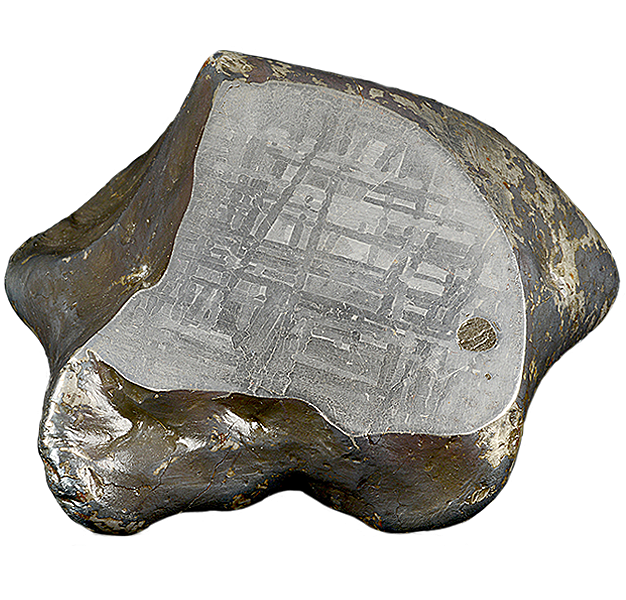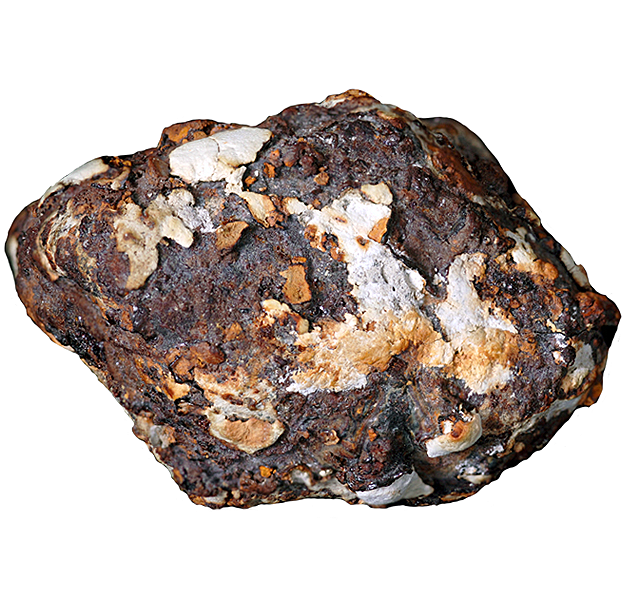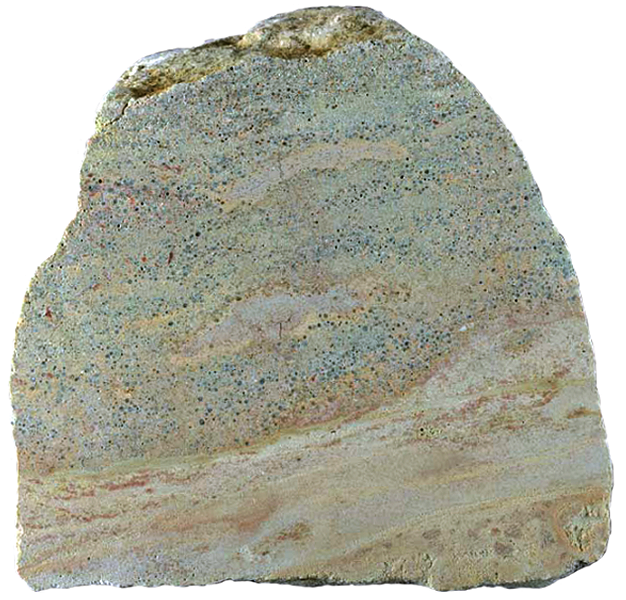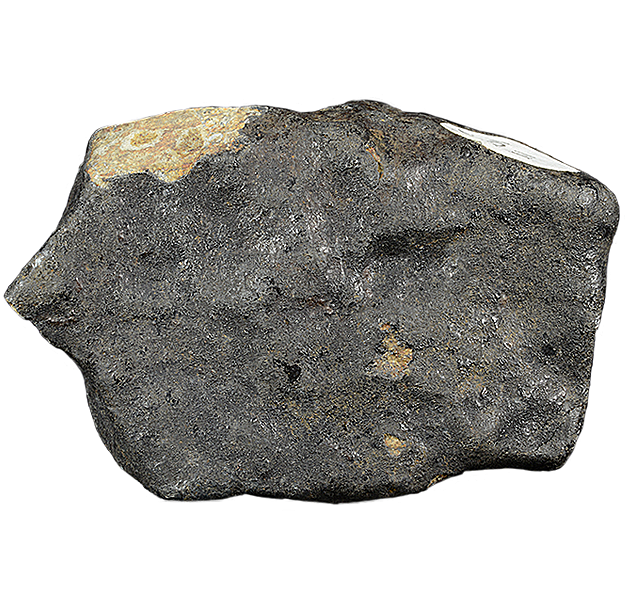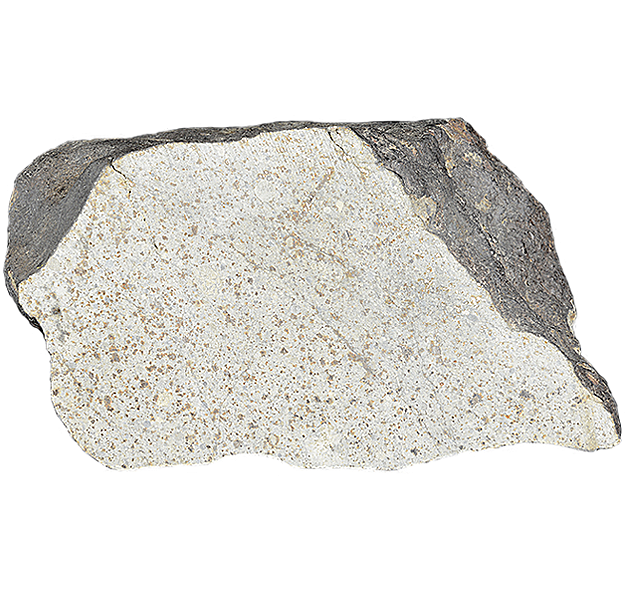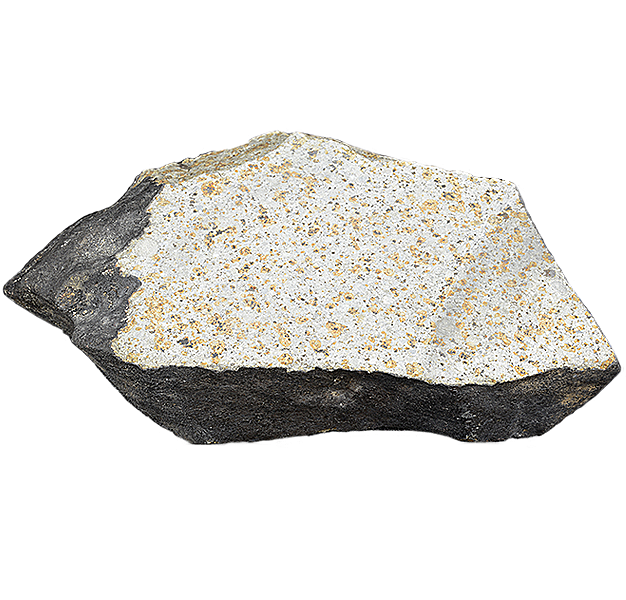
Fact sheet
The Strathmore meteorite was observed to fall on 3rd December 1917. The meteorite passed over Fife and the Sidlaw Hills (Scotland) and later four stones were found: Easter Essendy (10.1 kg), Carsie (1.1 kg), Keithick (1.1 kg) and South Corston (1.0 kg). The latter stone was recovered from a 15 cm deep hole in the lawn of South Corston Farm.
The Strathmore meteorite is classified as an L6 chondrite, meaning it has a low iron content (5-10%) and indistinct chondrules that have been metamorphosed under conditions capable of homogenising all mineral compositions. Look in PPL to see a few chondrules (rounded features - rotation 1 and 2) consisting of olivine and pyroxene crystals. The reflected light view shows metallic iron (both randomly distributed and in a vein) and golden yellow troilite. Note how the metal has generated rusty marks on the broken surfaces of hand specimen.
See also:
http://www.bimsociety.org/bim4.shtml
http://www.lpi.usra.edu/meteor/metbull.php?code=23729
Specimen: BM1922,793
Thin section:
This Collection consists of meteorites that have fallen in Great Britain and Ireland and which are now preserved in museum collections. We have also included samples of the two known meteorite impact deposits in the UK.
The Natural History Museum in London offers more information about meteorites and meteorite categories; there is more information about its meteorite collections here.

